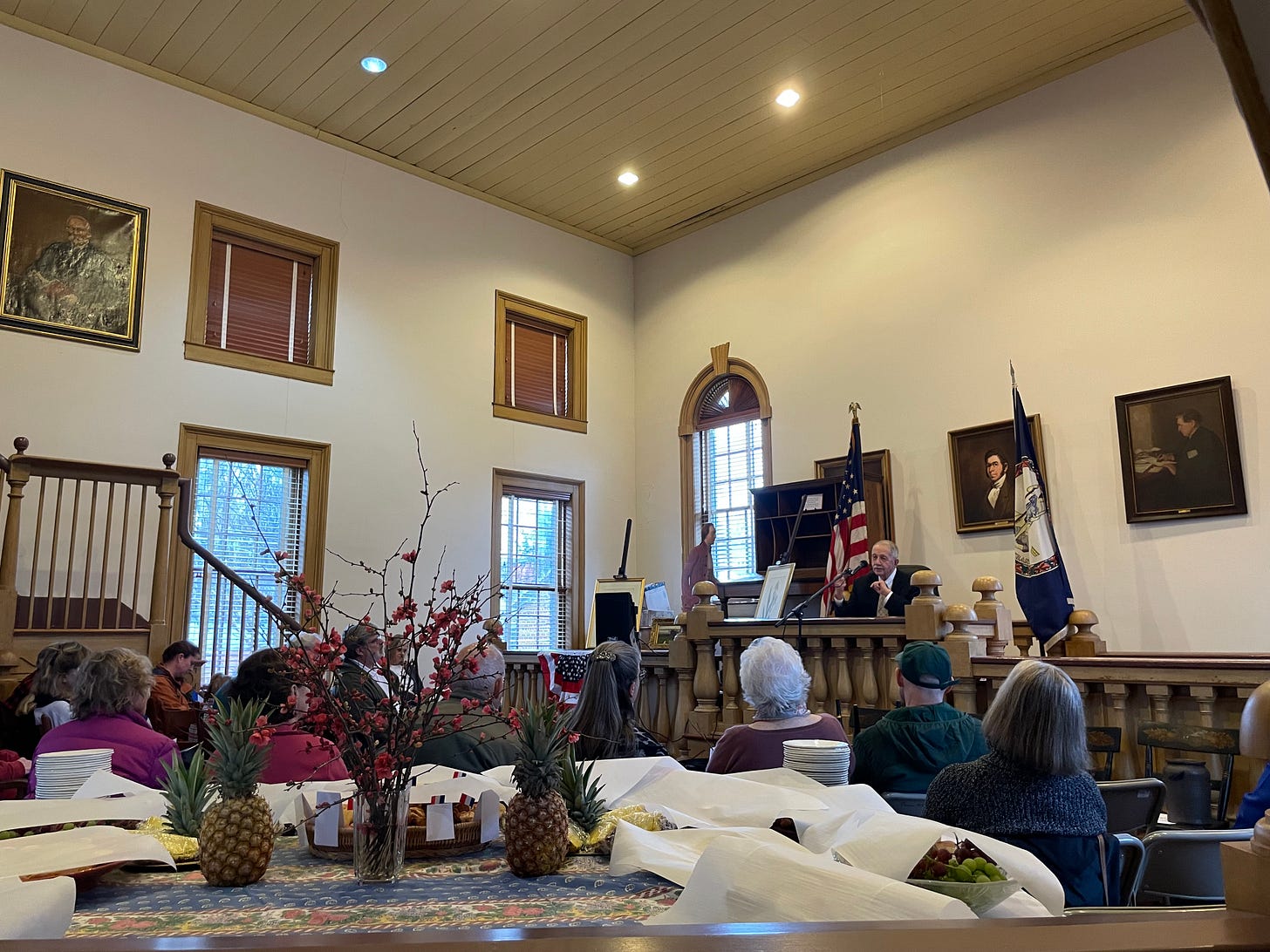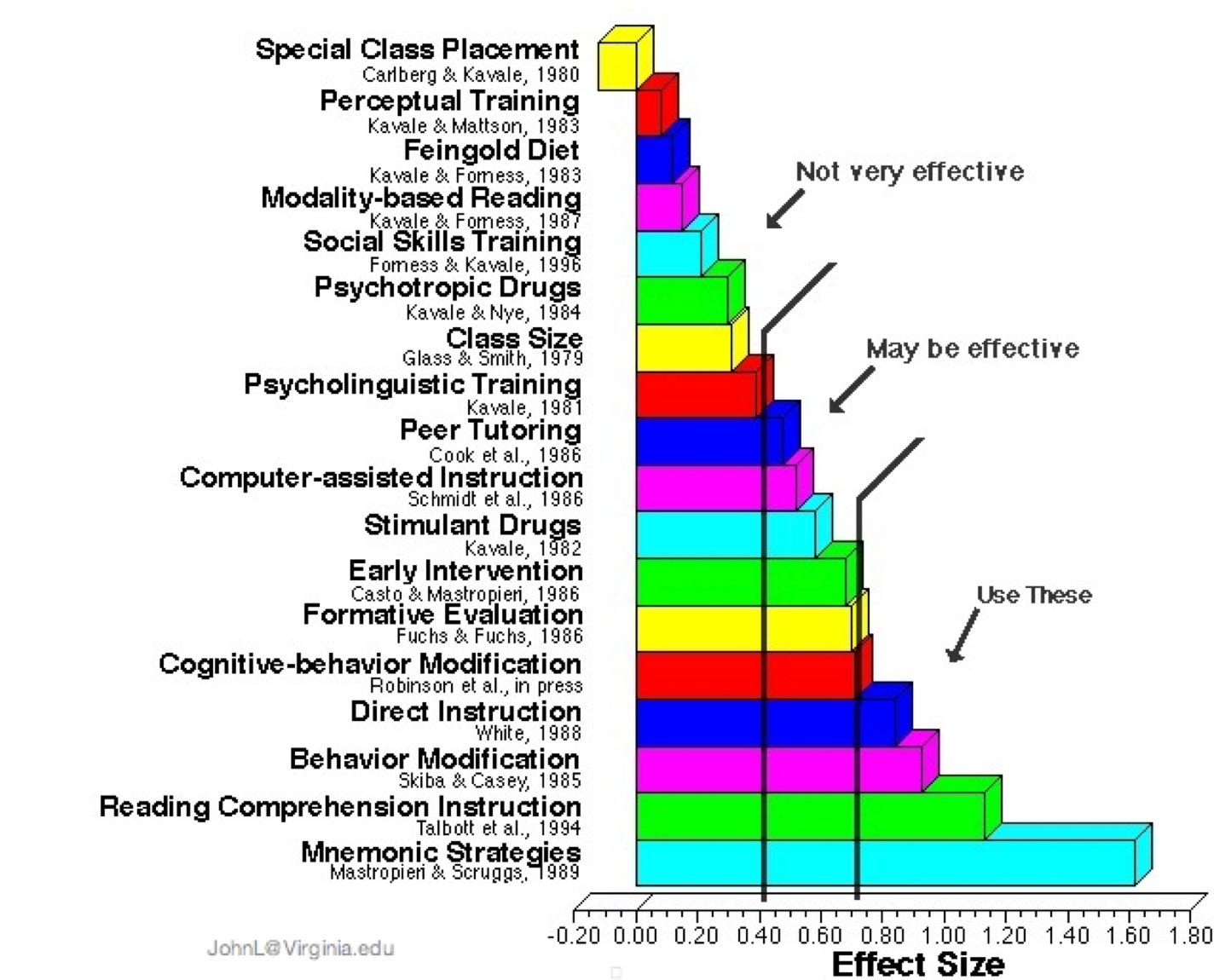Special Education Today newsletter 3(38)
Do you need a quick review of the week of 11 March 2024?
It’s time for another newsletter from Special Education Today, this one covering the second week of March 2024. Please hold on to the poles, straps, posts (teehee), and each other, as this may be a bumpy ride! Here we go!
Some notes
There are only another a dozen (or so) additional issues of the newsletter before readers will see the end of the third volume year. As of now, I plan to get to volume 3, number 50 and then call it a year. By that time (early June), there will have been about 900 posts on the Web site. Some of them have probably been read once or a few times; others have been read more than 1500 times. At that rate, I think it’s safe to say that posts on SET have not “gone viral.” I know I have read each of those 885 currently available at least once, but I doubt that anyone else has read all of them.1
The photo in this week’s newsletter is from the old Fluvanna County Courthouse. I say “old” because the building is over 90 years old and seldom, if ever, used as a court any longer; Fluvanna County has a modern replacement.
Pat and I were at the old court building because the Fluvanna County Historical Society held a celebration of the 200th anniversary of the time when the Marquise de Lafayette passed through Fluvanna on his way to Charlottesville to visit Thomas Jefferson. As a child I remember hearing my elders point to a brick building at the little crossroads that is called Wilmington and saying “Lafayette slept there,” so I was eager to experience the goings on (a couple of re-enactors spoke and there was singing, food, etc.) at the meeting at the court house. I also have been regularly intrigued by the courthouse because my mother’s father was the Commonwealth’s Attorney for Fluvanna; sitting in it gave me an opportunity to imagine him practicing law 100 years earlier (and also to wonder under what circumstances my mother, as a little girl, got to play there while accompanying him sometimes).

Flash go the electrons!
Before I go into content that will be familiar to many readers, I divert your attention to a couple of rarer appreciations. I want to acknowledge Greg Ashman of Filling the Pail and Laura McKenna of The Great Leap for recommending SET to their readers. Not only do I appreciate their letting others know about SET, but also I want to commend them for publishing sensible and relevant content regularly. If any readers have not reviewed their respective sites and read their posts, those readers have missed valuable observations and connections. Please don’t stumble on the way, but visiting each site is worth the trip!
I was enhappied (teehee) to see the likes and comments that folks contributed over the last week. Thanks to
Dan H., Betsy T., Jane B., and Jim K. for dropping comments on one or more posts the past week;
Clay K., Dan H., Rebecca B., Markus H., Larry M., and Jane B. for brightening the like buttons on posts the last seven days; and
Pei H., Allison L., Adelaide K., Betsy T., and Rebecca B. for reading lots of posts the last week.
Thanks, of course, to everyone who has subscribed (welcome to new subscribers such as Colin McK., Dawn W., Pei H., and Kaleigh P.) including those of you who have made cash commitments to supporting SET with paid subscriptions—and especially to Mike G. and Li-Yu H. for leading the pack in promoting SET’s activities.
Table of contents
As I was preparing this issue of the newsletter, it struck me as strange that I have been using “table of contents” to refer to the list of posts from the previous week. Usually one finds a ToC at the beginning of a publication, that is, before encountering articles or chapters (or poems, or whatever), not after reading them. But several hundred of you dear readers have already read the posts from last week in advance of seeing this section of the newsletter. So, I’m thinking mayhaps I should revise the heading for this section of the newsletter. What do you think?
Whatever I call this section in the future, here’s a list of the posts from the week beginning 11 March (yep, perhaps it’s another mistake, but in this context I refer to Monday as the start of a week…Sigh).
Special Education Today newsletter 3(37): News and info for the week beginning 4 March 2024
Friday photos on a Tuesday: Welcome to visitors from afar!
On bumblebees, learning, and peer tutoring [hmmm…no subtitle!]
More about cognition, communication, self-stuff in bees, apes, chimps, and children: Isn’t thinking magical?
Success at a special school [yikes!…another post with no subtitle!]
"Fred's" FI collection of recent resources: Do you know what's going on in the behavior analysis world?
Readers may not have seen e-mail messages about each of the foregoing entries in this catalog. I didn’t send e-mail versions of each of them, and for one I only sent paid subscribers a message.
Commentary
People may have different starting places for special education. For me one of the most foundational starting places is this premise: Our kids deserve the very best instruction that we can muster. That starting place leads me to examine special education procedures, practices, methods, materials, etc. through an empirical lens.
I’ve exposed my hard, cold, prickly, behavioristic heart a couple of times recently. I apologize if some readers find that perspective offensive. I am quite willing to own up to a behavioral orientation, and to suggest—with a smile—that the “hard, cold, prickly” part is actually predicated on people’s interpretation of behavioral methods. Some folks profess a preference for soft, warm, fuzzy, smooth perspectives; they argue that such views are more considerate and humane. So be it. People can adopt different perspectives. Some folks like pink, some like green…. I’ll argue that “considerate” and “humane” methods and such are those that produce maximal benefits for our kids.
To me, the way that we characterize perspectives matters a lot less than the outcomes that our actions produce. Some actions produce better outcomes for kids and their families than other actions. Once we have different methods and examine the outcomes from them, it’s only a short step to acknowledging that, as Steve Forness, the late Ken Kavale, and I wrote, “some methods are more effective than others” (Lloyd et al., 1998). Here’s a figure similar to one that we published in that article; it illustrates comparisons among methods that are well-known to many special educators.
I encourage readers not to employ this image as justification for adopting or rejecting any particular method. It’s important to read the actual article2 so that the findings are not taken out of context. For example the negative finding for special class placement is an average of studies involving students with different disabilities and employing different outcome measures; the average finding masks different results—some of them far greater—for students with intellectual disabilities, learning disabilities, and emotional and behavioral disorders. Similarly, the finding for formative evaluation looks pretty damn good, but it turns out that under that average are results showing even more beneficial effects in some circumstances than in others.
To be sure, the data that we employed in the comparison shown in the figure are now dated. There are newer results. I do not think the general picture provided by John Hattie (2008), which is far more comprehensive and up-to-date examination than our article, contradicts the perspective I am presenting.3
All of these observations are aimed at the point that effects of instructional practices matter more than our personal preferences for the practices. Whether I like Method Red or Method Blue matters lots less than what those methods do. for learners. Your kids deserve more than just getting the instruction we might like.
So, let me reiterate my recommendation that you drive carefully and wear seatbelts, take care of yourselves (‘cause we need people who give a damn about kids’ outcomes), and teach our kids well.
JohnL
John Wills Lloyd, Ph.D.
UVA Professor Emeritus
Founder & Editor, https://www.SpecialEducationToday.com/
Reference
Hattie, J. (2008). Visible learning: A synthesis of over 800 meta-analyses relating to achievement. Routledge.
Hattie, J. (2023). Visible learning: The sequel: A synthesis of over 2,100 meta-analyses relating to achievement. Routledge.
Lloyd, J. W., Forness, S. R., & Kavale, K. A. (1998). Some methods are more effective than others. Intervention In School and Clinic, 33(4), 195-200. https://doi.org/10.1177/105345129803300401
Footnote
If a dear reader (or two) thinks she has read all 885 of them (886 including this one) or even 600 of them, please let me know. I’d enjoy chatting about stronger and weaker posts. (And, rest assured, I promise I am not planning a quiz.)
If you would like to have a PDF of the Lloyd et al. article, just reply to this newsletter-message and ask for one. I can send it to you at no charge.
I point to Professor Hattie’s first book knowing full well that his more recent book (2023) may not correspond precisely with my views. I have ordered and eagerly anticipate reading the newer volume.


